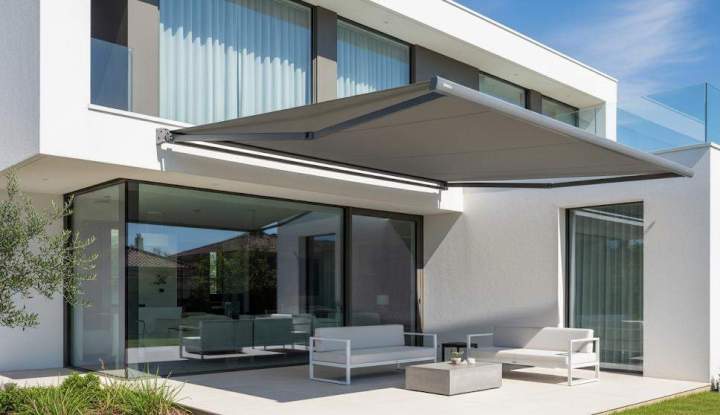Choosing Your Awning: Canvas vs. Synthetic for Residential Use
Residential Admin / August 6, 2025

Understanding Awning Materials
Canvas Awnings
Canvas awnings have been a traditional choice for both commercial and residential applications. Made from durable cotton or a cotton-polyester blend, these awnings offer a classic look and feel.
Pros of Canvas Awnings
-
Canvas awnings offer a timeless, sophisticated appearance, often available in various colors and patterns to complement your home's design.
-
The natural fibers in canvas allow for breathability, making them a comfortable choice for hot climates where heat dissipation is essential.
-
Canvas is a biodegradable material, making it a more environmentally friendly option compared to synthetic alternatives.
-
Minor damages to canvas awnings can often be repaired through patching or sewing, extending the product's lifespan.
Cons of Canvas Awnings
-
Canvas awnings require regular cleaning and maintenance to prevent mold, mildew, and fading from sun exposure.
-
While durable, canvas is more susceptible to wear and tear compared to synthetic fabrics, particularly in harsh weather conditions.
-
Although treated canvas can offer water resistance, it may not perform as well as synthetic options in heavy rain.
Synthetic Awnings
Synthetic awnings are typically made from materials like acrylic, polyester, or vinyl. These fabrics are engineered for durability and performance.
Pros of Synthetic Awnings
-
Synthetic fabrics are designed to withstand various weather conditions, making them more resistant to fading, tearing, and water damage.
-
These awnings are generally easier to clean and maintain. Many synthetic materials are treated to resist stains and mildew, requiring little more than a simple wash.
-
Synthetic awnings often come with excellent water resistance, making them ideal for regions with heavy rainfall.
-
Synthetic materials tend to maintain their color longer, resisting fading due to sun exposure.
Cons of Synthetic Awnings
-
Unlike canvas, synthetic fabrics can trap heat, making them less comfortable in extremely hot climates.
-
While many synthetic awnings are available in various colors and patterns, they may not achieve the same classic look that canvas provides.
-
Most synthetic fabrics are petroleum-based, raising concerns regarding their environmental impact and recyclability.
Key Considerations When Choosing Awning Materials
Climate and Environment
When deciding between canvas and synthetic awnings, consider your local climate. For areas with high humidity and rainfall, synthetic options may be more suitable. Conversely, regions with dry, hot weather might benefit from the breathability of canvas.
Usage Frequency
If your awning will see frequent use, synthetic materials might be the better choice due to their durability and low maintenance. For less frequently used awnings, canvas could provide the aesthetic appeal without the need for rugged durability.
Budget
Canvas awnings typically have a lower upfront cost compared to synthetic options. However, consider long-term costs, including maintenance and replacement, when making your decision.
Aesthetic Preferences
Your home's overall design should guide your choice. If you prefer a classic look that complements a traditional aesthetic, canvas may be the way to go. For a modern, sleek appearance, synthetic materials might be more appropriate.
When you're ready to move forward with confidence, consulting with a professional installer ensures your new awning perfectly complements your home's unique character and requirements.